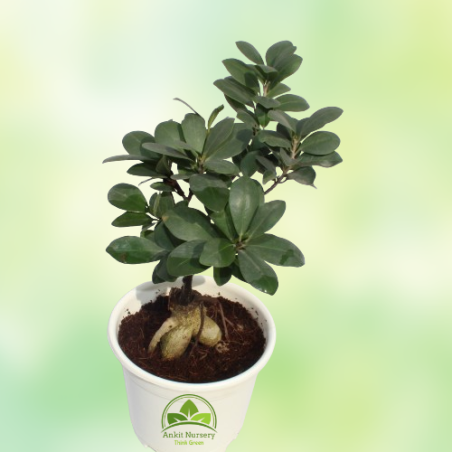
- -10%






The "Ficus Long Island" is a variety of Ficus benjamina, commonly known as the Weeping Fig. It's a popular indoor plant with long, narrow leaves and a graceful, weeping growth habit. Ficus Long Island plants prefer bright, indirect light. They can tolerate some direct sunlight, especially in the morning or late afternoon, but avoid prolonged exposure to intense sunlight, as it can scorch the leaves.
Keep your Ficus Long Island in a warm environment with temperatures between 65-75°F (18-24°C). Avoid exposing it to drafts or sudden temperature fluctuations. Water your Ficus Long Island when the top inch of soil feels dry to the touch. Water thoroughly, allowing excess water to drain away. Avoid overwatering, as this can lead to root rot. In winter, reduce watering frequency.
Ficus Long Island plants prefer moderate to high humidity. Mist the leaves regularly or place a tray of pebbles filled with water beneath the plant to increase humidity around it. Use well-draining potting soil that retains some moisture. A mix formulated for tropical plants or houseplants works well. Repot the plant every couple of years to refresh the soil. Feed your Ficus Long Island with a balanced liquid fertilizer diluted to half strength every 4-6 weeks during the growing season (spring and summer). Reduce or stop fertilization in fall and winter.
Prune your Ficus Long Island to maintain its shape and remove any dead or damaged leaves. You can also prune to control its size or encourage bushier growth. Ficus Long Island plants may benefit from support with a stake or trellis as they grow, especially if they have a weeping or cascading growth habit.
Ficus Long Island plants can be propagated from stem cuttings. Take a cutting with several nodes, remove the lower leaves, and place it in a pot with moist potting mix. Keep the soil consistently moist until roots develop. Ficus Long Island plants are toxic to humans and pets if ingested, so keep them out of reach of children and animals. With proper care, your Ficus Long Island plant can thrive and bring beauty to your indoor space. Enjoy watching it grow and flourish!
Cyperus alternifolius, commonly known as Umbrella Palm, is a popular plant species native to...
Aglaonema, commonly known as Chinese evergreen, is a popular indoor plant appreciated for its...
Aglaonema, commonly known as Chinese Evergreen or Aglaonema, is a popular and easy-to-care-for...
Sansevieria, is a popular and compact variety of the larger Snake Plant species. It's called...
The Saplera plant, also known as Polyscias filicifolia, is a tropical tree native to Southeast...
Aglaonema Snow White is a specific cultivar of Aglaonema known for its striking foliage. As...
Golden Song of India is a common name for the plant known scientifically as Dracaena reflexa...
Dracaena marginata, commonly known as the Dragon Tree or Madagascar Dragon Tree, is a popular...
The Malpighia plant, commonly known as Barbados cherry, Acerola cherry, or West Indian cherry,...
The Snowflake Aralia Plant, also known as Aralia or Parsley Aralia, is a tropical plant with...
Dracaena is a genus of tropical plants known for their attractive foliage and low maintenance...
The Snake Plant, scientifically known as Sansevieria trifasciata (formerly classified under...
Aglaonema, commonly known as Chinese evergreen, is a popular houseplant appreciated for its...
Kagzi Grafted Lemon Plant, also known as Citrus limon 'Kagzi' or 'Kagzi Nimbu,' is a popular...
Aglaonema plants, commonly known as Chinese Evergreens, are popular indoor plants prized for...
Red Sensation Cordyline, also known as Cordyline fruticosa 'Red Sensation' or Red Sensation...